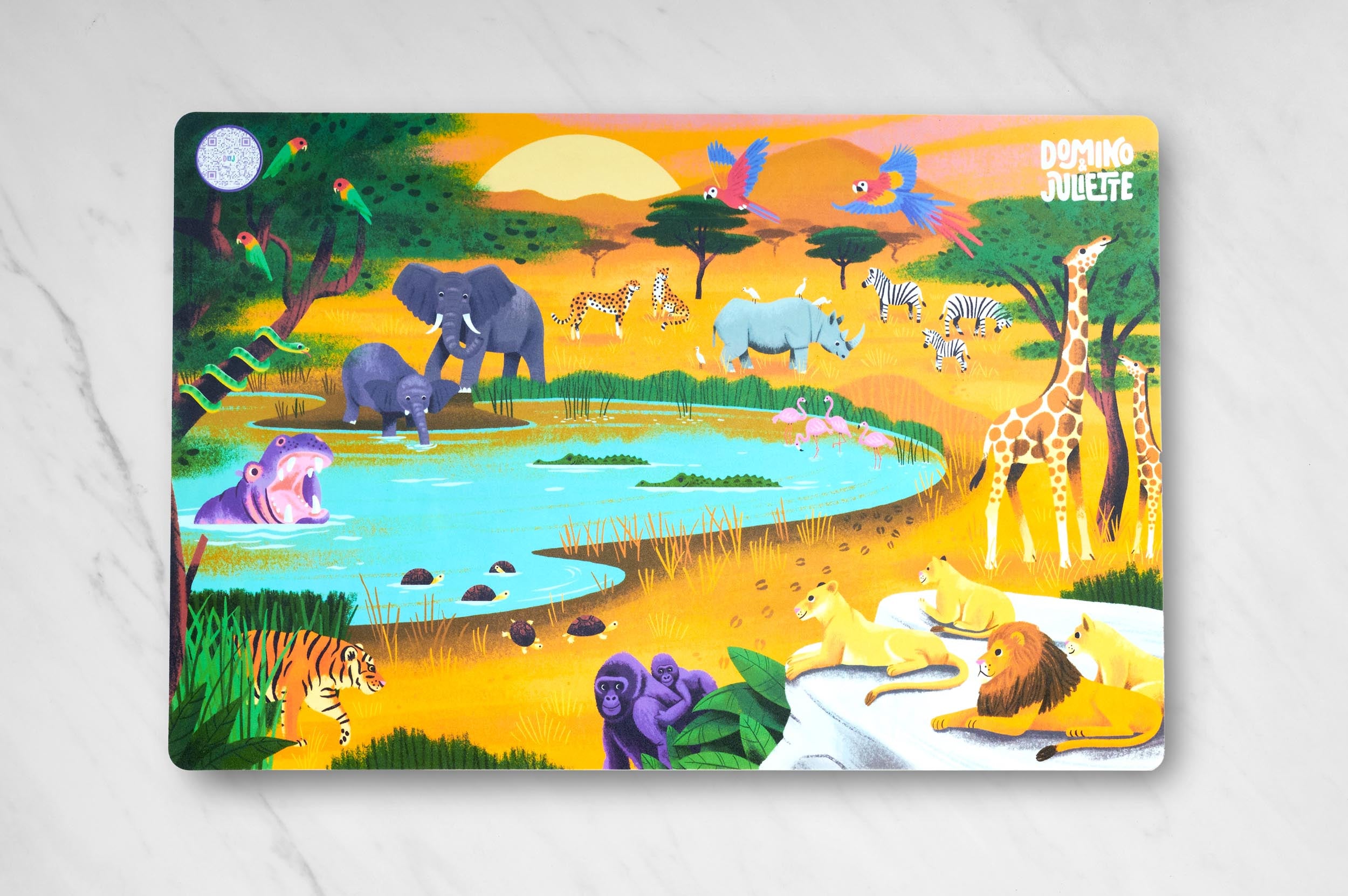
Welcome to the Bright Idea Zone!One toy, many ways to play
Discover a multitude of bright ideas for each placemat and keep the fun fresh. Designed by educational experts and sorted by age and ability, these activities help keep little minds engaged and growing.
For offline play, click to download the printer-friendly version of this page, as well as your bonus printable tools, and begin your learning adventure today!
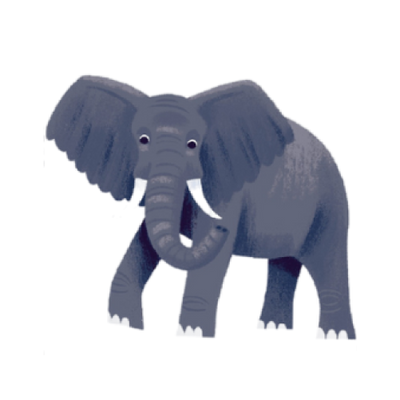
What if we told you you could go on a trip of a lifetime viewing the most exotic animals in their natural habitat from the comforts of your own home? That’s right, this mat provides the awe-mazing sights of a safari without the need to fly overseas. Is your child a Beginner Zoologist? Budding Zoologist? Intermediate? Or how about an Expert Zoologist? Study cheetahs and hippos up close while engaging in learning-level appropriated activities centered around 3 learning categories including language development, mathematics, and literacy. For extra fun with this mat, parrot with a snack! Get it? Pair it! (We had to.)
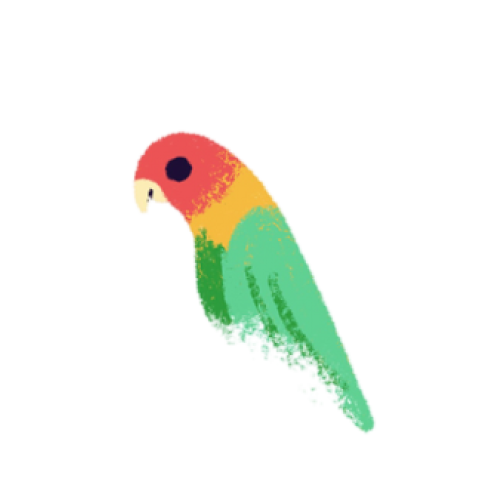
Beginner Zoologist Activities
Sounds of the safari!
- Point to the lion. “The lion makes the rooaar sound.”
- Let’s say “rooaar!”
- Turn it into a game! “Can you make an elephant sound?” Allow your child to come up with their own sound or continue modeling what an elephant makes. There’s no pressure for your child to be able to say the sound independently. It’s all about having fun!
- Suggested sounds to try out: tiger (grrr!), elephant (eeee!), gorilla (ooo-ah-ah!), parrot (cheep, Polly wanna cracker!), snake (ssss!)
- Sing a little tune, “If you’re a lion and you know it, say ‘Rooar’!” and go through the different animals on the mat.
Time to name the animals!
- Point to an animal and name it, saying, “This is a lion!”
- Talk about details of the animals by saying, “Lions have furry manes.” “Elephants have long trunks…” Or imitate animal features with hands and gestures.
Things found on a safari – Let’s take a closer look!
- Point to an image and label it, such as, “This is a tree!”
- Point and label other simple safari words, such as: sun, water/pond, rock, grass, tree, before learning more advanced words like savanna, desert, mountains.
What sound does the “T” make?
- Name an object on the mat and repeat the beginning letter sound. For example, ”Turtle…t,t,t…Turtle.”
- Start with the earliest developed sounds of b, p, m, h, w, d, and t and focus on 1 to 2 sounds at a time.
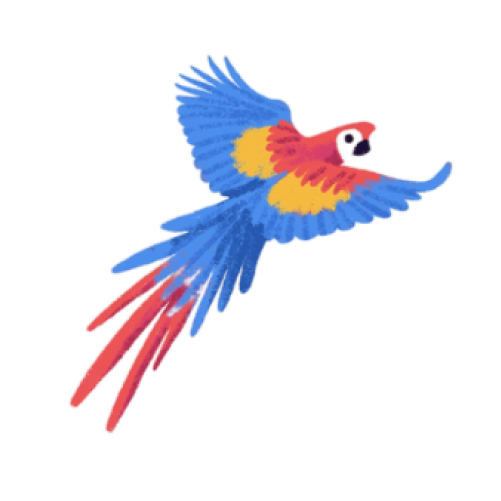
Budding Zoologist Activities
Put on those listening ears!
- Keep instructions simple with 2 steps by asking, “Look for the giraffe and point to them,” or “Find the tigers and make a tiger sound.” You can also use your D&J printables here. “Can you find another turtle and make it crawl up to this group?”
- Get creative with your instructions! Pause to let your child follow the instructions and model when needed.
Colors in a safari!
- Label animals and objects using colors, “Red parrot…yellow sun…etc.”
- Ask your child to point to all the things of the same color, “Find all the green things!”
- Count the number of items/objects of the same color.
- Point to an object in the picture and ask your child to showcase their knowledge by asking, “What color is this?”
Just what are those animals doing?
- Point to an animal and label the animal’s actions using 2-3 words. For example, “The hippo swims!”
- Age-appropriate actions to use: walk, run, hop, jump, sit, swim, stand, go.
- Encourage your child to repeat the sentence out loud.
- After modeling, point and ask your child what the animal is doing, “What is the hippo doing?”
Let’s locate animals and objects on the safari!
- Point to and label an animal and its preposition, or position (in, on, out, up, down, under) using simple statements such as:
“The cheetah is in the grass.” “The snake is on the tree branch,” etc.
- Ask “Where are the parrots?”
- Quiz your child’s awareness of preposition differences by asking: “Are the lions ON the rock or IN the water?” Model correct responses when needed.
- Using the D&J animal printables, “Can you put a zebra next to the giraffe?”
Time to sort the safari!
- Point to the different types of animals and label them.
- Categories to label can include: land animals, water animals, animals that fly, animals with fur, mommy and baby animals, animals with spots, and animals with stripes.
- Start with one category at a time and point and label those items, “These animals go in the water…”
- Now ask your child to showcase their knowledge asking “what” questions. “What animals like the water?” “What animals fly?” etc…

Intermediate Zoologist Activities
Let’s kick up those listening skills a notch!
- Start with simple instructions like, “Find the gorillas, parrots and zebra!”
- Now mix it up and add in descriptive words (animal sizes or colors): “Point to the green snake, black gorilla and gray elephant.”
- Using your D&J printables, encourage the child to listen to your instruction. “Three more animals showed up in the safari. A zebra walked up to the pond to take a drink. A parrot landed on the tree to say hello to the giraffes. A snake slithered out of the grass near the tiger.” Ask your child to show this happening using the printable animals.
- Turn the activity into a game of “I spy!” “I spy an animal sitting in a tree, with colorful wings and it says ‘caw-caw’. What is it?”
- Play “Simon Says” with 3-part instructions, “Simon says, find the parrots, flap your wings and sing.” Have fun!
So much is happening on the safari!
- Select an animal from the safari mat and ask “What is the (giraffe) doing?”
- Allow your child to come up with their own thoughts or idea of what is going on in the picture before modeling it. Adding the D&J printables to the game makes the possibilities endless here!
- Play a guessing game by imitating an animal and ask your child to guess which animal you are. Take turns and invite them to imitate an animal while you guess.
What’s it feel like?
- Talk about different textures: soft, rough, smooth, bumpy, spikey, wet, hard, squishy.
- Turn it into a guessing game, “I’m thinking of an animal with a smooth hard shell.” Once answered, it’s your child’s turn to come up with clues! Keep taking turns.
Answering safari-themed questions!
- Talk about different images on the safari mat by asking a “Wh” question:
- “Who swims in the water?”
- “Where do the lions live?”
- “When do parrots fly?”
- “How do elephants drink?”
- “What do crocodiles eat?”
- Pause to allow time for your child to answer the questions!
- Model a response if needed
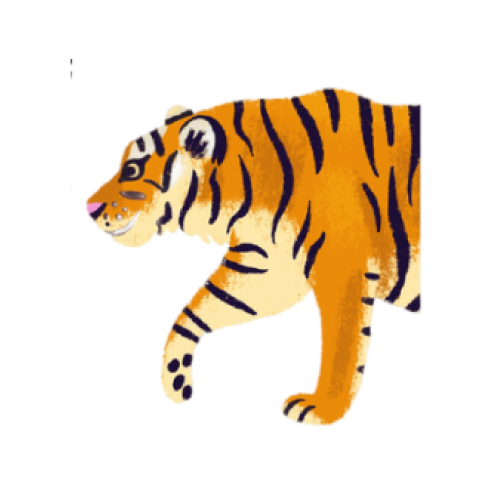
Expert Zoologist Activities
Let’s create safari stories!
- Encourage your child to pick a picture on the safari mat and tell a short story about the picture.
- Offer story ideas about what an animal does, a friendship between two animals, or an adventure the animals might go on! Model actual stories aloud, if needed.
- Take turns telling the story where your child says one sentence and you say another:
Person A: “The turtle family went for a swim.”
Person B: “They found a pond to splash in.”
- Place the D&J animal printables in a bag. Have the child select 3 or 4 printables and make up a story about the animals/objects they select from the bag.
Orientation and other time concepts!
- Ask your child what they think the animal does in the morning, afternoon, and nighttime. For example, “What do you think the zebra does at night?”
- Talk about what the animals are doing today, what they did yesterday and what they will do tomorrow.
- Talk about other events that take place like, “The sun rises in the morning and the safari animals wake up,” “It gets hot in the afternoon and the turtles cool off in the water,” or “The sun sets at night the lion cubs fall asleep under the rock.”
- Expand the conversation and talk about what animals might do.
- Make up short stories that show a simple sequence like, “First the mommy and baby gorilla woke up, next they ate breakfast, then they went for a walk to see their animal friends!”
- Be sure to use present tense words for events that happen now, past tense words for events that happened yesterday, and future tense words for events that will happen at a later time.
Let’s learn “why/because”!
- Ask “why” questions that are simple to understand. For example, “Why do giraffes eat from the tree?” “Why do hippos open their mouths like that?”
- Model “because” responses if your child needs support and to show cause and effect.
- For example, “Because giraffes have long necks.” “To show animals their large teeth and scare them off!”
- If answering why is difficult, rephrase the question to “How come giraffes eat from the tree?” or “I wonder if giraffes eat from the tree because they have long necks?” Again, modeling correct responses is perfectly fine for those who need it.

Beginner Zoologist Activities
Let’s learn to count!
- Point to animals and model aloud counting 1-10.
- Now, narrate as you count. Say “There are 2 gorillas…1, 2…” Point as you count!
- Have your child practice pointing and counting as well.
- Say the number you counted one more time to reinforce what was counting, “There are 2 gorillas…1….2…we counted 2,” “There are 3 zebras…1…2…3…we counted 3!”
Safari size exploration
- Model and point out small things first, then big things! For example,
- narrate the sizes as you look at the animals saying, “I see these baby gorillas are small,” “I see the turtles are small,” or “The parrots are small.”
- “I see the mommy gorilla is big,” “The elephants are big,” or “The lions are big!”
- Play “Seek and Find” by pointing to all the little things then the big things! Take turns with your child.
Safari animal patterns
- Focus on the different patterns on the animals by pointing and naming them. For example, “The zebra has stripes and the cheetah has spots”
- Show your child how to trace the stripes or the spots.
- Look for similar patterns in the mat like grasses or leaves.
Simple compare and contrast!
- Look at the lions and point out the male lion with the mane vs the female lions who do not have manes. Label the adult male as different, saying, “The daddy lion is different than the other lions, can you see why?” “The other lions are all the same, they do not have manes.” Also point out what is the same about all of the lions (they all have 4 legs, tails, fur…).
- Expand the concept of “sameness” to matching! Model matching by pairing up animals that are the same, saying, “That spotted cheetah matches this spotted cheetah!” “This pink flamingo matches this pink flamingo!” At this age, it is all about narrating what you see and simple listening from your child.
- Show your child how to match the D&J animal printables to the mat. “Look, here is a snake! Let’s find the snake that looks the same. Here it is!”

Budding Zoologist Activities
Number and quantity recognition
- Introduce the concept of visual numbers using fingers and hands. Hold up one finger at a time as you count to 10!
- Follow your child’s pace when building number knowledge. It’s okay if they only get to 3 fingers!
- Ask your child to hold up their fingers as you count to 10. If they need help, first ask, “Do you want me to help with your fingers?”
- Use your D&J Find & Fit Numbers puzzle to show the number you are working on. Alternatively, write out the numeral to match the quantity that was counted on a post-it.
- Look for animals that match the quantity you’re counting, “This is two, 1, 2 (on fingers)…let’s count two giraffes 1-2.” And so forth.
What’s Big? What’s Small? What’s Short? What’s Tall?
- Review the things that are certain sizes, like looking at all the small things and labeling animals “small”. The same for big animals.
- Then select one animal and say, “Let’s find the animals that are bigger than the turtles.”
- Ask your child to point to sizes in sequential order by pointing out the big, bigger, biggest, or smaller, smallest animals!
- Ask “What looks bigger, the mommy elephant or baby elephant?” Do this across animals.
More and less
- Look at groups of pictures of different quantities in different positions around the safari mat. For example, animals in the water, on the land, in the tree or in the sky.
- Say “I see more animals on the land than in the water. There are more animals on the land!”
- Count the animals out loud to compare how many and to show how the quantity is more or less.
- Model counting to show what is more or less by saying, “I counted 2 elephants like this. [Show 2 fingers.] And 3 zebras [Show 3 fingers on the other hand.] I needed more fingers for the zebras than elephants.” Repeat this with the other animals.
A little safari math!
- Select an animal family to demonstrate adding or taking away (subtracting). For example, talk about a mommy and her babies to show adding 1 more to start like “There was a mommy and baby elephant and one more walked up (bring one more onto the mat using your D&J printable) so now there are 1,2,3…3 elephants!”
- Add or take away 1! Say, “There are 4 flamingos in the water, if 1 more joined (point to the added picture) I have 4!" Repeat these steps with turtles, birds, alligators, zebras, cheetahs, and your D&J animal printables!
Spatial relationships–Let’s learn prepositions!
- Focus on positional language: on; off; in; out; up; down; under; on top.
- Look at one spatial word at a time and say, “The lions are ON the rock.”
- Pick a preposition and count all the objects, “Let’s count all the animals that are IN the grass.” Repeat across other prepositions!

Intermediate Zoologist Activities
It’s counting time!
- Review the counting order with your child by counting the image of choice on the safari mat “1, 2, 3, 4, 5” (flamingos, lions, turtles, parrots and zebras, trees).
- Pick one number in the range, like “3”, and ask your child what comes before and after. Model if needed.
- Get visual! Write out numbers in order on a sheet of paper and ask your child to say or point to the number that comes before or after.
Count beyond 10!
- Ask your child to count to the highest number of animals, grass, or leaves on the mat so you know your starting point for new numbers!
- For example, if your child can count up to 20 focus on learning to count from 20-30.
- Using the safari mat, work on counting different pictures like, “Let’s count 25 animals on the mat.”
- Add in counting things of the same color, sizes, or shapes!
- Use similar objects around the room, like all the red things, to go beyond the mat.
- Get Visual! Include showing the new numbers using your D&J Find & Fit Puzzles so your child can learn what the new numbers look like visually.
More/less/equal– Expanding quantitative concepts!
- Select 2 animal groups on the mat, and ask your child if one group is more than, less than, or equal to the other..
- Say, “Are there more lions or zebras? Are there less hippos or elephants? How many more cheetahs are needed to make them equal to the zebras?”
- Count the groupings together to see the answer.
Part-Part-Whole
- Discuss parts of a whole with your child “There are 4 total lions and 1 of them has a mane, 3 do not.” “Let’s look at the turtles. There are 5 total turtles. Three are in the water and two are not!”
- Other examples of this may include animals with fur, animals with spots, things that can swim, total birds. “Let’s count the animals in this picture that have stripes. There are 4 total animals with stripes. 3 zebras with stripes, one tiger with stripes.”
- To help your child visually understand this concept, use the printable ten frame paired with D&J colored bingo chips. Using animals with spots as an example, you can line up 2 red bingo chips (giraffes) and 2 purple bingo chips (cheetahs) on the ten frame to show the 4 total animals with spots.
Math Stories–Mix in some math with your story skills!
- Select a group of animals to use in a story. For example, “There were 2 giraffes eating from a tree. One more giraffe joined them for lunch. Now, how many giraffes are on the hill?”
- Have your child count the animals to find the answer!
- Now it’s their turn to come up with a story including the concepts “more”, “less” or “equal.”
Categorization, here we go!
- Using the mat look for things that are short and tall, in and on, in front and behind, etc.
- Compare and sort the objects based on their measurement or positioning.
- Sort other pictures into other categories like shapes, colors, and size. For example, ask your child to describe the groupings, like “These things are red…these things are round.”
- Draw your child’s attention to two objects that are both the same and different. Say,
- “These cheetahs are the same because they both have spots. This lion is different because it has a long brown mane, and the others don’t.”

Expert Zoologist Activities
Concept of ten
- The safari tour guide decided he wanted to see 10 of each animal on his tour. How many turtles do you need to add to this picture? Have child build how many are on the safari currently using the ten frame printable. This allows them to see conceptually and concretely how many more to make ten.
- Using the D&J printable animals, have the child add the correct number of animals to bring the totals to ten (this will require printing two sets of the printables!).
Write it out!
- Using the idea of a safari tour guide taking a head count of the animals you see on your trip, have your child write out the number they count on a separate piece of paper. For example, if you say the safari guide counts 3 zebras, have your child write out a number “3”!
- Keep practicing and have the safari guide count out other animals! Take turns with your child and write out each number.
Skip counting
- Start with counting by 2s, 5s, or 10s
- Say “Counting by 2s sounds like 2, 4, 6, 8, 10. Each number goes up by 2 when you count by 2s.”
- Point to animals on the safari mat to show your child what skip counting looks like, for example count by 2s with bird wings, animal eyes or ears.
- As your child picks up on skip counting, try it out with 5 and 10!
Time to take away!
- Select a picture group on the safari mat
- Say, “If there were 5 lions on the rock and one got off there would be 1, 2, 3, 4 lions left.” Visually, you can do this by placing a few printable animals on the mat and removing them to subtract.
- Start subtracting by 1 or 2 and build from there!
Number order
- Select a group of animals that are lined up: flamingoes, turtles, trees.
- If needed, match up the number with the terms, 1st, 2nd, 3rd and so on. These numbers are called ordinal numbers because they tell the sequence of items.
- Use ordinal numbers and say, “This flamingo is ONE so it’s FIRST.” Continue with second, third and so forth.
- Expand number order to other images by using your D&J printables. Have the child line the animals up off the mat if it is more helpful!
- Now it’s time for your child to practice! Ask your child to count using 1st, 2nd, 3rd, 4th to count things lined up in a row.
Figuring out number value!
- Using the mat have your child count a grouping in the picture.
- Select a number that what was counted and ask your child to identify what number is less, saying, “Which number is less, 4 or 6?” Use fingers to count if your child needs extra visual support to see “more” and “less.”
What would you guess?
- Ask your child to look at different animal groupings then say, “Do you think there are more than 2 parrots flying or less than 2 parrots flying?”
- Double check the answer by counting the picture in the grouping.
- Repeat the activity with other animals or pictures in the scene!

Beginner Zoologist Activities
Nursery rhymes–Time to rhyme!
- Select an animal-themed nursery rhyme like: Little Bo Peep, Mary Had A Little Lamb, The Cow Jumped Over the Moon, 5 Little Ducks, Little Boy Blue, Baa, Baa, Black Sheep, Farmer in the Dell
- Swap out the animals in the traditional rhymes with a safari animal!
- Find alternate words to rhyme when needed. Have fun with this!
- Example “Little Bo Peep lost her hippo and doesn’t know where to find it. Leave it alone, the hippo will come home, wagging its tail behind it.”
B-I-N-G-O–Sing it safari style!
- Select different animals on the mat and point to them while singing “BINGO.” –Encourage your child to clap along while you say the letters!
- Make up different names or use your child’s name to clap and sing with different animals.
Simple storytelling–It’s storytime!
- Pick a scene from the mat and make up a short story about what is happening.
- For example, say, “Once upon a time there was a mama gorilla and a baby gorilla. They went to visit their lion friends. Baby gorilla got a piggy-back ride. Baby gorilla heard the daddy lion roar and say ‘hello.’ The baby lions hopped up to play. Baby gorilla and the baby lions ran around the rocks and had fun.”
- Repeat this across 2 or 3 stories simply having your child listen!

Budding Zoologist Activities
We’re going to a safari – Inspired by the book, “We’re Going On A Bear Hunt!” by Helen Oxenbury and Michael Rosen.
- Select an animal like lions and say, “We’re going to a safari! We’re going to see some big ones! What a beautiful day! Uh-oh! A lion. A big lion.”
- Repeat the safari rhyme and go through the mat selecting all the animals. Use different descriptions that match each animal such as color, patterns or size.
Tell me a story–It’s storytime!
- Ask your child to pick a scene or animal on the mat and provide them with a made-up story about what is happening.
- Now ask them to think of a short story about what they see!
- To help them along, ask questions like, “Why is the hippo in the water? What is it doing in the water?”
Safari animal vocabulary recall–Let’s test that knowledge!
- Ask your child the following questions using the mat:
- “Where are the ____(animals)?”
- “Point to the ____ (animal/object).”
- “What things are ____(color)”
- “Point to the things that are shaped like a ____(shape).”
Mama and baby animals–Expanding vocab!
- Select an animal on the mat and say, “This is a mama lion, a baby lion is called a cub.”
- Review all baby names on the mat.
- Now ask your child the names of baby animals as you point to the animal on the mat!

Intermediate Zoologist Activities
Rhyming words–Rhyme time!
- Select an image or word like safari and ask your child, “What words or sounds rhyme with safari?” “What word rhymes with lion?”
- Say other words, including made-up words, like, “ari, cari, mari, hari…” “cryin, onion, byin, flyin, myan…”
- Take turns going back and forth coming up rhymes using the items seen on the mat. Have fun with this!
Letter sounds – Say It! Write it!
- Pick a letter and ask your child to make the letter sound.
- Now ask your child to write the letter. Then look for things on the safari mat that start with that letter!
ABC Safari scavenger hunt – Letter-sound recognition!
- Sing the ABCs, then slow it down and point to a picture that starts with that letter like C for crocodile, G for gorilla, Z for zebra.
- It’s okay if you don’t find a picture for every letter!
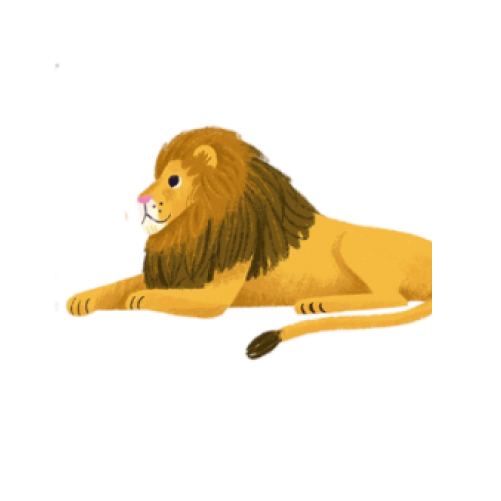
Expert Zoologist Activities
Reading word flashcards – Teaching Simple Reading!
- On Post-it notes write out different words related to the safari mat from the following categories:
- Animals/nature: lion, cub, tree, grass, rock, tiger, monkey, turtle
- Colors: red, blue, green, yellow
- Sizes: big, little, tall
- Prepositions/Locations: in, on, out
- Use the Post-it notes like flashcards and review words with your child!
- Now ask your child to read the word on the note card and then place the word next to the matching picture on the mat. Here are some ways to break it down:
- Hold up 2 cards and ask your child to point to the word you say.
- Lay out 2 cards and ask your child to hand you the word you say.
- Turn all the words over like a memory game, flip a word over and have your child read it.
- Invite your child to write out words.
- Encourage your child to read the words as they pick it up!
Tell a story sequence – Building a story!
- Review the meanings of beginning, middle and end. Pair “beginning” with “1st,” “middle” with “next,” and “end” with “then.”
- Model telling a story with “first, next, then” sequencing.
- Now it’s your child’s turn to share a safari story using the above sequencing words!